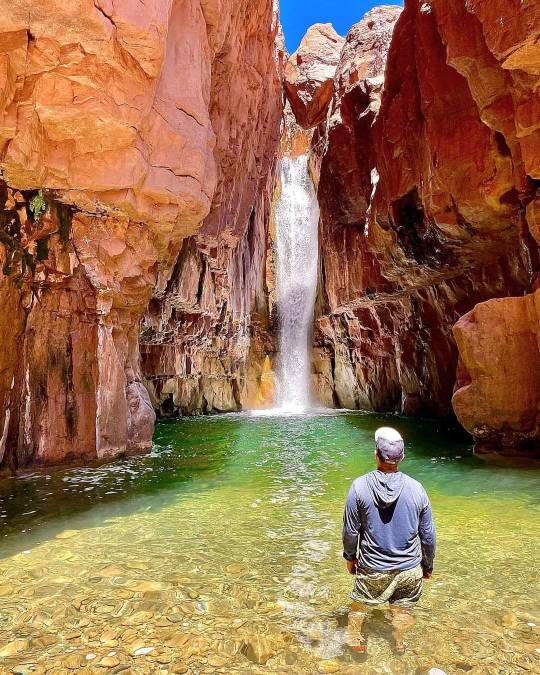#Cibecue Falls
Text
Discover 9 of Arizona's Most Epic Waterfalls
Discover the beauty of Arizona’s natural wonders through its stunning waterfalls. From the turquoise waters of Havasu Falls to the majestic Grand Falls, these breathtaking sights are a testament to the power and magnificence of nature.
Whether you’re an adventurer or simply seeking inspiration, these nine waterfalls are a must-see for anyone who wants to experience the wonder of Arizona.
Table…

View On WordPress
#Arizona#Beaver Falls#Cibecue Falls#Fifty Foot falls#Flagstaff#Fort Apache Reservation#Grand Canyon National Park#Grand Falls#Havasu Falls#Havasupai Indian REeservation#Mooney Falls#Navajo Nation#Pacheta Creek#Pacheta Falls#Payson#Rincon Mountains#Santa Catalina Mountains#Seven Falls#Supai#Tanque Verde#Tanque Verde Falls#Tonto National Forest#Water Wheel Falls#waterfalls#waterfalls of Arizona#White Mountain Apache Reservation
0 notes
Photo

Cibecue Falls Trail [3024x4032][OC]
2 notes
·
View notes
Photo
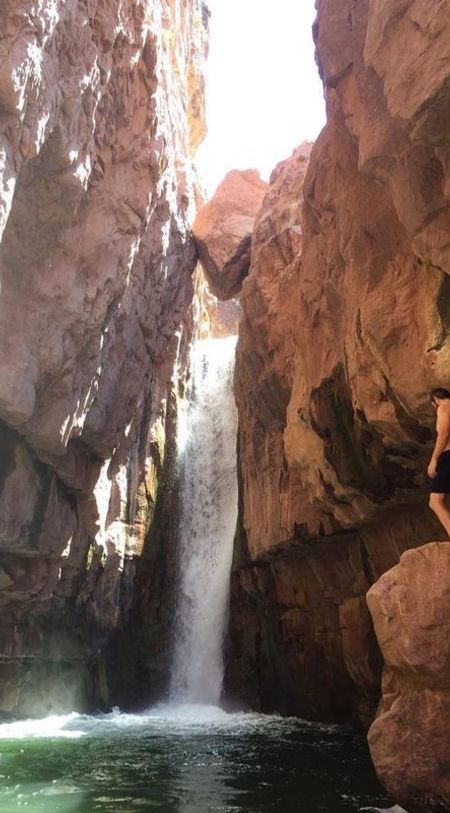
This Hiking Trail Leads to the Secluded Cibecue Falls in Arizona
Discover the enchantment of Arizona's Cibecue Falls and let nature guide your footsteps along this picturesque hiking trail.
0 notes
Text
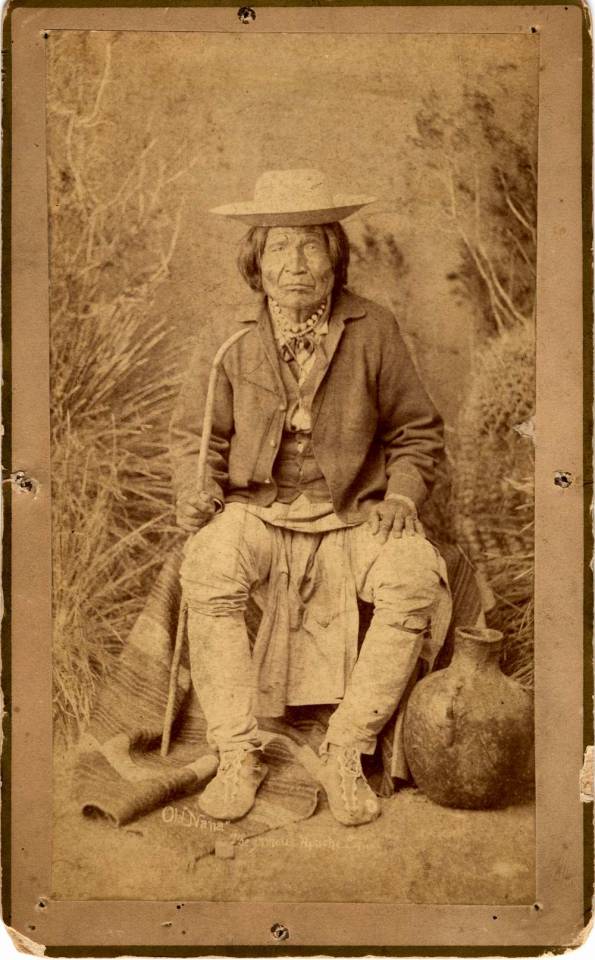
Nana, circa 1885
Kas-tziden (meaning "broken foot"), more commonly known as Nana (meaning "lullaby/grandma"), was a warrior and chief of the Chihenne band of the Chiricahua Apache. A trusted lieutenant to Cuchillo Negro and Mangas Coloradas, in the 1850s and 1860s he was one of the best known leaders of the Chihenne (Tchiende), along with Tudeevia, Ponce and Loco. He fought alongside Mangas Coloradas and his mixed Tchihende-Bedonkohe band until Mangas Coloradas was killed while in the custody of the California Column in January 1863. In Mexico he undertook many joint raids with the Nednhi of Juh and Natiza against the Mexicans. After Ponce, Cuchillo Negro and Delgadito were killed too, Victorio took over the Tchihende leadership. During the Apache Indian Wars, he raided areas of Texas and Mexico with Victorio. After several failed attempts to peacefully live on a reservation in their own country, Victorio and Nana gave up trying and fought back against the Americans and Mexicans. The Bedonkohe and Chihenne were joined by more than 80 warriors of the Mescalero Apache under their old chief Caballero. Victorio and Nana therefore had about 200 warriors. During the Apache Wars and especially Victorio's War Nana raided areas of Texas and Mexico with Victorio. Though Nana had been with Chief Victorio when he was killed in the fall of 1880 at Tres Castillos, Mexico, he and several others were scouting for supplies and ammunition at the time, evading the ambush. 68 women and children were captured by the Mexicans and sold as slaves in Mexico. After coming upon the dead warriors, Nana and his followers hide in the Sierra Madre Mountains of Mexico and soon devised a revenge campaign. Several prestigious leaders and warriors, such as Fun (Yiy-gholl, Yiy-joll, Yiy-zholl, also known as Larry Fun), Ka-ya-ten-nae (Ka-e-te-nay, Kadhateni or Kieta - "Fights Without Arrows", "Cartridges All Gone") took the leadership of the Tchihende, Bedonkohe, Tsokanende and Nednhi bands beside the already established Apache band leaders Nana, Loco, Mangas, Naiche, Geronimo and Juh. Though lame in the left foot, suffering from rheumatism, and his eyesight failing, Nana was obviously still strong and in January 1881, he and his men crossed the border back into the United States. Though his group never numbered more than 40 warriors and was often as few as 15, they sought their revenge by raiding Army supply trains and isolated settlers. During those first few months, the band raided numerous small camps in southern New Mexico, killing two miners near Chloride and wounding another; killing four men on the Silver City-Mesilla Road, and in June, raiding and burning a ranch property near Lake Valley in 1881. Soon, a combined posse of civilians and Buffalo Soldiers pursued them into a canyon about ten miles west of Lake Valley. Unfortunately, for the posse, Nana and his warriors ambushed them immediately killing their leaders and wounding a number of others. A full-out gun battle followed that lasted six hours in which at least four more soldiers were killed. Others who were wounded would later die as well. Two months later, he and his band traveled to Arizona, where they were involved in the Battle of Cibecue on August 30, 1881. Nana, now almost 80 years old (according to some reports, nearly 90-years), formed his own war party with the Chihenne (Warm Springs Apache), enlisting loitering warriors in the reservations. His band joined by 15 Tsokanende, 12 Mescalero warriors and a couple of Navajo, plus women and children, began raiding Army supply trains and isolated settlers. In less than a month Nana fought seven or eight battles stretching over the course of 1,000 miles and killed 30-40 Americans, at least as many Mexicans, captured about 200 horses to replace 100 ridden to death and then fled back to Mexico. He and his small force, evaded more than 1,000 soldiers, 300-400 civilian militia volunteers and Apache and Navajo Scouts.
The U.S. Cavalry never caught Nana and his men but fought them in at least seven engagements. Finally, when the band once more fled to Mexico, the U.S. Army gave up for a time, hoping the Mexicans would take care of the problem, as they had done with Victorio. Nana soon joined forces with Geronimo and continued fighting for two more years until he was captured in a surprise attack by General George Crook in 1883 and was sent to the San Carlos Indian Reservation in Arizona. He later escaped with Geronimo and fought with him during his last days of resistance. In 1886, both warriors once again were forced to surrender to General George Crook and taking no chances with them, they and their warriors were sent to a prison in Fort Marion, Florida and Alabama. In 1894, they were relocated to Fort Sill in the Indian Territory, present-day Oklahoma. Nana died of natural causes in 1896.
#nana#geronimo#chihuahua#apache#apachewars#mexico#19thcentury#trueamericans#nativeamerican#lozen#victorio#cochise#mangascoloras
0 notes
Text
my rei map and compass class is tomorrow which is actually great because i can go and get the permit i need to hike cibecue falls tomorrow and not have to stop on the way there on sunday and drive straight to the trailhead to get as much time as i want out there, hopefully by myself so i can film and get pictures of the place before relaxing for awhile.
2 notes
·
View notes
Text

Located on the eastern edge of the Tonto National Forest is the spectacular Cibecue Falls. Another hidden gem 😍
5 notes
·
View notes
Photo
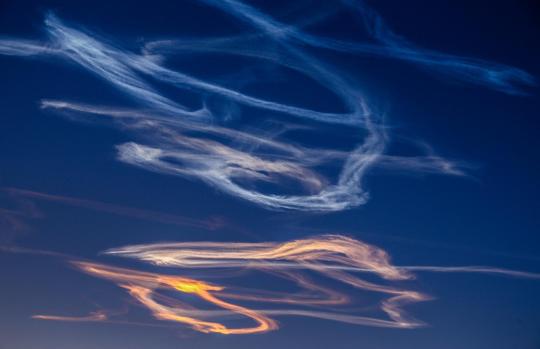
2016 ARIZONA METEORITE FALL POINTS RESEARCHERS TO SOURCE OF LL CHONDRITES The Dishchii’bikoh meteorite fall in the White Mountain Apache reservation in central Arizona has given scientists a big clue to finding out where so-called LL chondrites call home. They report their results in the March 2020 issue of Meteoritics and Planetary Science. “LL chondrites are fairly common meteorites with low-oxidized and low metallic (LL) iron content,” said Peter Jenniskens, the lead author and meteor astronomer with the SETI Institute and NASA Ames Research Center. “We want to know where they originated because the damaging Chelyabinsk airburst of February 15, 2013, in Russia, was caused by a particularly large 20-meter-sized LL chondrite.” LL chondrites originate from somewhere in the asteroid belt between Mars and Jupiter, where a parent body broke up and created a family of asteroids long ago. Occasional collisions with those family members eject rocks into orbit around the Sun. When these small asteroids collide with Earth’s atmosphere, they cause a bright meteor from which pieces survive sometimes and fall on the ground as meteorites. “Prior to this fall, only three other LL chondrite falls had ever been photographed,” said Jenniskens. “Those asteroids had arrived on relatively short 2-year orbits around the Sun, taking slightly longer than it takes Mars to orbit the Sun, but shorter than most main belt asteroids.” The Dishchii’bikoh fall was observed over much of Arizona around 3:56 am on June 2, 2016. The bright meteor was filmed by the LO-CAMS low-light video camera network led by astronomer Nicholas Moskovitz of Lowell Observatory in Flagstaff. “This was particularly exciting because it was the first meteorite fall we captured with our cameras,” says Moskovitz. As the asteroid plunged through the atmosphere, it was spinning more than two times per second, and a large fragment broke off at 44 km altitude. Further down, the meteor flared at altitudes of 34, 29, and 25 km and left a spectacular dust train in the sky that was photographed, illuminated by the rising Sun. Because they fell closer to the ground, the meteorites reflected Doppler weather radar signals as if there was a brief hail storm, telling scientists where to search. A team of six researchers and meteorite hunters led by co-authors Laurence Garvie and former graduate students Prajkta Mane and Daniel Dunlap of Arizona State University received permission from tribal elders to do so. They recovered 23 meteorites under the radar footprint in the weeks after the fall. Following the meteorite recovery, members of the White Mountain Apache tribe proposed the name Dishchii’bikoh Ts’ilsoosé Tsee for the meteorite, which is Apache for Cibecue Star Stone. This name is shortened to Dishchii’bikoh in publications. “The meteorite was classified LL type,” says Garvie. “Of shock stage 7. Only one other LL7 fall has ever been recovered.” Analysis of the meteorites showed that Dishchii’bikoh, unlike Chelyabinsk, was a harmless size of 80 centimeters in diameter (32 inches), based on rare isotopes left in the meteorite from exposure to cosmic rays in space. “This is still among the bigger falls we have investigated so far,” says cosmochemist Kees Welten of UC Berkeley. A research team led by Qing-zhu Yin of UC Davis investigated whether Dishchii’bikoh could have formed on the same parent body as Chelyabinsk. “Oxygen and chromium isotopes confirm a similarity in material type,” says team member Matthew Sanborn of UC Davis. The team found that both meteorites represented rock that was heated in impacts that happened about 100 million years after the formation of the solar system, suggesting they originated from the same parent body. That parent body is now broken, forming one or more of the many asteroid families between Mars and Jupiter. Studies of noble gases at ETH Zürich in Switzerland showed that Dishchii’bikoh was ejected following one of many ongoing collisions with these asteroids that happened 11 million years ago. “That collision is much older than the 1.2 million years of Chelyabinsk,” report cosmochemists Matthias Meier and Henner Busemann of ETH Zürich, “but much younger than the 36 million years of the LL chondrite that recently fell near Stubenberg in Germany.” The small asteroids from this collision moved into orbits that became perturbed by a resonance on the inside of the asteroid belt, making their orbits more elongated, so they ultimately impacted Earth. “All four LL chondrites we have studied so far arrived at Earth on short orbits,” says Jenniskens. “This is telling. The short orbits point to the inner asteroid belt as the source region.” In that region is a large and widespread asteroid family called “Flora” that appears from telescopic observations to have a composition similar to LL chondrites. “Dishchii’bikoh’s orbit became super short and steeply inclined from numerous close encounters with Earth,” says Jenniskens. “Such encounters are particularly frequent if the asteroid early on moved nearly in the plane of the planets.” All told, these new data help show that LL chondrite meteorites like Dishchii’bikoh and the more dangerous Chelyabinsk impactor came from the edge of the asteroid belt closest to Earth, from a region in the belt near the plane of the planets. IMAGE....Dust cloud of the Dishchii'bikoh meteorite fall photographed from Phoenix, Arizona, at 10:58 UTC, June 2, 2016. Photo: Mike Lerch, Phoenix.
20 notes
·
View notes
Photo

I love my pupperdoodle. It bums me out we can't do much outdoor stuff together during the summer because the #Arizona heat is dangerous for her but it has given me an excuse to visit the north part of the state more! This picture was taken near Cibecue Falls earlier this summer. Does your dog adventure with you? (at Cibecue Creek, Arizona) https://www.instagram.com/p/BmvEEMmgRNO/?utm_source=ig_tumblr_share&igshid=jr2vu0dvbnti
8 notes
·
View notes
Photo
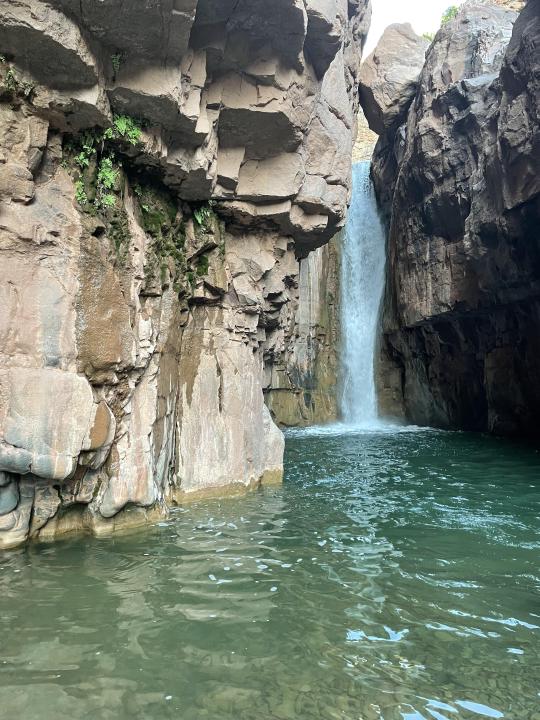
Cibecue Falls Trail [3024x4032][OC]
1 note
·
View note
Photo

Sycamore Falls is one of the most impressive waterfalls in Arizona (next to Havasupai and Cibecue), yet few people have visited these falls or have even heard of them. With the Grand Canyon and Sedona dominating the attention of tourists in Northern Arizona, Sycamore Falls truly is one of the best-kept secrets. Located about 1 1/2 hours south of the Grand Canyon, you’ll find another impressive yet lesser-known Canyon. Sycamore Canyon is a 21-mile scenic Canyon that begins in the thick Ponderosa Pine forests near Williams and ends in the desert landscape of Verde Valley. #jgtravelhopes #waterfall #waterfallvideo #dreamdestination #flowingwatercalmsme (at Sycamore Falls) https://www.instagram.com/p/CI3sItslQihqV0NZgtSnItzP6CnmX2IuqG09jA0/?igshid=1szg4w63zf93i
0 notes


